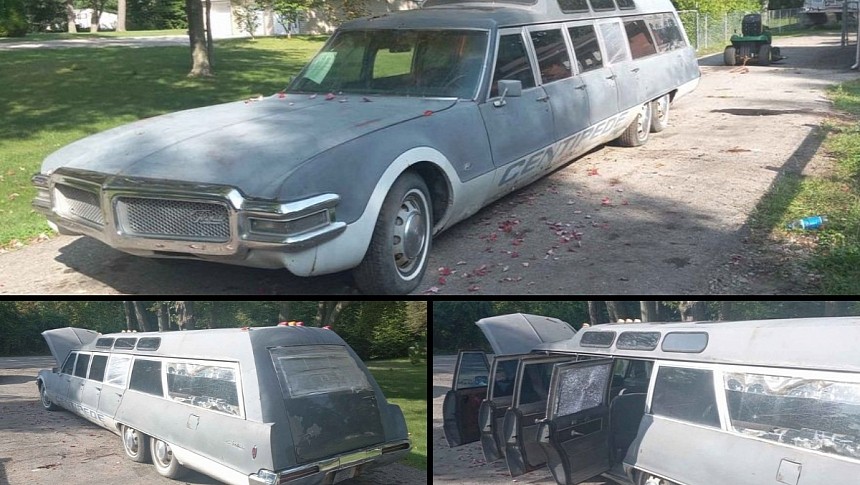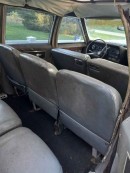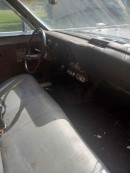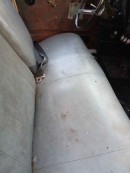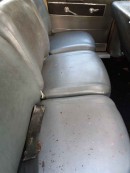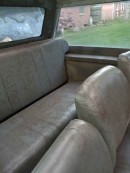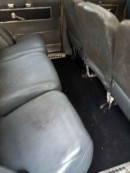Introduced for the 1966 model year, the Oldsmobile Toronado was a game-changer for the US automobile industry due to its front-wheel-drive architecture.
While FWD cars were already a thing in Europe at the time, rear-wheel-drive was still the preferred layout in North America. Was the Toronado the first FWD vehicle built in the US? Not really. That award goes to the Cord L-29, introduced in 1929.
However, the L-29 and the more iconic 810/812 series that followed in 1936 were built in limited numbers. So, while it arrived a few decades late to the FWD party, the Toronado was America's first mass-produced automobile with this configuration.
A rather flamboyant appearance design-wise, the Toronado had a few advantages over its RWD competitors. By putting the engine and the driving wheel on the same end of the car, Oldsmobile got rid of the driveline tunnel and created a roomier interior. The heavier front end also improved stability.
But I'm not here to talk about what makes the Toronado, a nameplate soldiered on for about 27 years, a great classic. I'm here to show you a version of the iconic first-generation model that will blow you away. Because it has six wheels, eight doors, and the footprint of a bus.
No, Oldsmobile did not build an airport shuttle based on the Toronado, but American Quality Coach did. It's called the Jetway 707 (yes, that's a reference to the Boeing 707), and it's a whopping 28 feet long. The eight doors provide access to five rows of seats that can accommodate up to 15 people. And it still has plenty of luggage room in the massive, hearse-like trunk.
The Jetway 707 was the first vehicle produced by the Arkansas-based American Quality Coach Company. The latter was established by Waldo J. Cotner and Robert Bevington, who previously built Cadillac-based professional cars. They were so impressed with the then-new Toronado that they sold their stock in the old company and formed a new firm to develop the Jetway 707.
But even though it was the largest and among the most luxurious airport shuttles of the era, the stretched Toronado wagon didn't sell well. ACQ reportedly ended production after completing around 50 examples. Other sources mention 150 cars. Whatever the number, only a few of them are still around, and they look like this worn-out limo sporting "centipede" letters on its sides.
Found in Belleville, Michigan, this Jetway 707 has a rather mysterious past. However, it's pretty clear that the huge six-wheeler hasn't been maintained for a long time and has been fully exposed to the elements for quite a few years.
The paint is heavily weathered, and the seats and door panels are covered in grime. Still, the vehicle is surprisingly complete for a rig that's nearly impossible to store under a roof due to its monstrous size. And shockingly enough, the massive 455-cubic-inch (7.5-liter) V8 under the hood still runs. That's a sign this airport hauler wasn't left to rot away like many of its siblings.
Listed for $12,500 on Facebook Marketplace, this Jetway 707 is one of those rigs that may not have a purpose in the modern era. But it's a rather exotic take on the first-gen Toronado and a vehicle I'd very much like to see restored. Is this behemoth worth a second chance?
However, the L-29 and the more iconic 810/812 series that followed in 1936 were built in limited numbers. So, while it arrived a few decades late to the FWD party, the Toronado was America's first mass-produced automobile with this configuration.
A rather flamboyant appearance design-wise, the Toronado had a few advantages over its RWD competitors. By putting the engine and the driving wheel on the same end of the car, Oldsmobile got rid of the driveline tunnel and created a roomier interior. The heavier front end also improved stability.
But I'm not here to talk about what makes the Toronado, a nameplate soldiered on for about 27 years, a great classic. I'm here to show you a version of the iconic first-generation model that will blow you away. Because it has six wheels, eight doors, and the footprint of a bus.
No, Oldsmobile did not build an airport shuttle based on the Toronado, but American Quality Coach did. It's called the Jetway 707 (yes, that's a reference to the Boeing 707), and it's a whopping 28 feet long. The eight doors provide access to five rows of seats that can accommodate up to 15 people. And it still has plenty of luggage room in the massive, hearse-like trunk.
The Jetway 707 was the first vehicle produced by the Arkansas-based American Quality Coach Company. The latter was established by Waldo J. Cotner and Robert Bevington, who previously built Cadillac-based professional cars. They were so impressed with the then-new Toronado that they sold their stock in the old company and formed a new firm to develop the Jetway 707.
But even though it was the largest and among the most luxurious airport shuttles of the era, the stretched Toronado wagon didn't sell well. ACQ reportedly ended production after completing around 50 examples. Other sources mention 150 cars. Whatever the number, only a few of them are still around, and they look like this worn-out limo sporting "centipede" letters on its sides.
Found in Belleville, Michigan, this Jetway 707 has a rather mysterious past. However, it's pretty clear that the huge six-wheeler hasn't been maintained for a long time and has been fully exposed to the elements for quite a few years.
The paint is heavily weathered, and the seats and door panels are covered in grime. Still, the vehicle is surprisingly complete for a rig that's nearly impossible to store under a roof due to its monstrous size. And shockingly enough, the massive 455-cubic-inch (7.5-liter) V8 under the hood still runs. That's a sign this airport hauler wasn't left to rot away like many of its siblings.
Listed for $12,500 on Facebook Marketplace, this Jetway 707 is one of those rigs that may not have a purpose in the modern era. But it's a rather exotic take on the first-gen Toronado and a vehicle I'd very much like to see restored. Is this behemoth worth a second chance?
